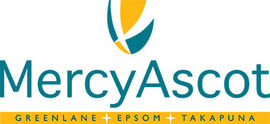Central Auckland, East Auckland, South Auckland, West Auckland, North Auckland > Private Hospitals & Specialists > MercyAscot >
MercyAscot Vascular Surgery
Private Surgical Service, Vascular Surgery, General Surgery
Consultants
Note: Please note below that some people are not available at all locations.
-

Dr Russell Bourchier
Vascular Surgeon
Available at all locations.
-

Dr Carl Muthu
Vascular Surgeon
Available at Mercy Hospital, 98 Mountain Road, Epsom, Auckland
-

Dr Peter Vann (Vanniasingham)
Vascular Surgeon
Available at all locations.
Procedures / Treatments
Endovascular therapy: a long thin tube (catheter) is inserted through a small incision (cut) made in the groin in the groin. The catheter is guided to the site of the aneurysm and a graft (synthetic tube) or stent (a metal tube) is put in place to relieve the pressure on the aneurysm. Conventional: an incision is made in the abdomen or chest and the weakened part of the aorta is replaced with a graft.
Endovascular therapy: a long thin tube (catheter) is inserted through a small incision (cut) made in the groin in the groin. The catheter is guided to the site of the aneurysm and a graft (synthetic tube) or stent (a metal tube) is put in place to relieve the pressure on the aneurysm. Conventional: an incision is made in the abdomen or chest and the weakened part of the aorta is replaced with a graft.
Endovascular therapy: a long thin tube (catheter) is inserted through a small incision (cut) made in the groin in the groin. The catheter is guided to the site of the aneurysm and a graft (synthetic tube) or stent (a metal tube) is put in place to relieve the pressure on the aneurysm.
Conventional: an incision is made in the abdomen or chest and the weakened part of the aorta is replaced with a graft.
Carotid Endarterectomy: an incision (cut) is made along the side of the neck, the carotid artery opened and the fatty material (plaque) removed. The artery is closed with a patch. Minimally invasive: a long thin tube (catheter) is inserted through a small incision made in the groin. The catheter is guided to the carotid artery where a balloon attached to the catheter is inflated to clear the blockage or a small metal tube (stent) is put in place to hold the blood vessel open.
Carotid Endarterectomy: an incision (cut) is made along the side of the neck, the carotid artery opened and the fatty material (plaque) removed. The artery is closed with a patch. Minimally invasive: a long thin tube (catheter) is inserted through a small incision made in the groin. The catheter is guided to the carotid artery where a balloon attached to the catheter is inflated to clear the blockage or a small metal tube (stent) is put in place to hold the blood vessel open.
Carotid Endarterectomy: an incision (cut) is made along the side of the neck, the carotid artery opened and the fatty material (plaque) removed. The artery is closed with a patch.
Minimally invasive: a long thin tube (catheter) is inserted through a small incision made in the groin. The catheter is guided to the carotid artery where a balloon attached to the catheter is inflated to clear the blockage or a small metal tube (stent) is put in place to hold the blood vessel open.
Balloon Angioplasty: a long thin tube (catheter) with a tiny balloon attached to the tip is inserted through a small incision (cut) made over an artery in your arm or groin. The catheter is guided through the arteries to the site of the blockage where the balloon is inflated to clear the blockage and, in some cases, a metal tube (stent) is inserted into the artery to keep it open. Endarterectomy: incisions are made in the affected limb and artery and the fatty material (plaque) in the blood vessel is removed. Bypass Surgery: a piece of a vein from another part of the body or a tube made of synthetic material (graft) is used to join the artery above and below the narrowed or blocked section. This creates a detour and a new path for the blood to flow around the blocked segment.
Balloon Angioplasty: a long thin tube (catheter) with a tiny balloon attached to the tip is inserted through a small incision (cut) made over an artery in your arm or groin. The catheter is guided through the arteries to the site of the blockage where the balloon is inflated to clear the blockage and, in some cases, a metal tube (stent) is inserted into the artery to keep it open. Endarterectomy: incisions are made in the affected limb and artery and the fatty material (plaque) in the blood vessel is removed. Bypass Surgery: a piece of a vein from another part of the body or a tube made of synthetic material (graft) is used to join the artery above and below the narrowed or blocked section. This creates a detour and a new path for the blood to flow around the blocked segment.
Balloon Angioplasty: a long thin tube (catheter) with a tiny balloon attached to the tip is inserted through a small incision (cut) made over an artery in your arm or groin. The catheter is guided through the arteries to the site of the blockage where the balloon is inflated to clear the blockage and, in some cases, a metal tube (stent) is inserted into the artery to keep it open.
Endarterectomy: incisions are made in the affected limb and artery and the fatty material (plaque) in the blood vessel is removed.
Bypass Surgery: a piece of a vein from another part of the body or a tube made of synthetic material (graft) is used to join the artery above and below the narrowed or blocked section. This creates a detour and a new path for the blood to flow around the blocked segment.
Balloon Angioplasty: a long thin tube (catheter) with a tiny balloon attached to the tip is inserted through a small incision (cut) made in your groin. The catheter is guided through the arteries to the site of the blockage where the balloon is inflated to clear the blockage and, in some cases, a metal tube (stent) is inserted into the artery to keep it open. Endarterectomy: an incision is made over the artery, the artery opened and the fatty material (plaque) removed. Bypass Surgery: a piece of a vein from another part of the body or a tube made of synthetic material (graft) is used to join the artery above and below the narrowed or blocked section. This creates a detour and a new path for the blood to flow around the blocked segment.
Balloon Angioplasty: a long thin tube (catheter) with a tiny balloon attached to the tip is inserted through a small incision (cut) made in your groin. The catheter is guided through the arteries to the site of the blockage where the balloon is inflated to clear the blockage and, in some cases, a metal tube (stent) is inserted into the artery to keep it open. Endarterectomy: an incision is made over the artery, the artery opened and the fatty material (plaque) removed. Bypass Surgery: a piece of a vein from another part of the body or a tube made of synthetic material (graft) is used to join the artery above and below the narrowed or blocked section. This creates a detour and a new path for the blood to flow around the blocked segment.
Balloon Angioplasty: a long thin tube (catheter) with a tiny balloon attached to the tip is inserted through a small incision (cut) made in your groin. The catheter is guided through the arteries to the site of the blockage where the balloon is inflated to clear the blockage and, in some cases, a metal tube (stent) is inserted into the artery to keep it open.
Endarterectomy: an incision is made over the artery, the artery opened and the fatty material (plaque) removed.
Bypass Surgery: a piece of a vein from another part of the body or a tube made of synthetic material (graft) is used to join the artery above and below the narrowed or blocked section. This creates a detour and a new path for the blood to flow around the blocked segment.
Sclerotherapy: a tiny needle is used to inject a chemical solution into the vein that causes the vein to collapse. This approach is recommended for small varicose veins only. Vein stripping: the varicose veins are cut out and the veins that branch off them are tied off. The cuts (incisions) made in the skin are closed with sutures. Phlebectomy: small cuts (incisions) are made in the leg and the varicose veins are pulled out with a tiny hook-like instrument. The cuts are closed with tape rather than sutures and, once healed, are almost invisible.
Sclerotherapy: a tiny needle is used to inject a chemical solution into the vein that causes the vein to collapse. This approach is recommended for small varicose veins only. Vein stripping: the varicose veins are cut out and the veins that branch off them are tied off. The cuts (incisions) made in the skin are closed with sutures. Phlebectomy: small cuts (incisions) are made in the leg and the varicose veins are pulled out with a tiny hook-like instrument. The cuts are closed with tape rather than sutures and, once healed, are almost invisible.
Sclerotherapy: a tiny needle is used to inject a chemical solution into the vein that causes the vein to collapse. This approach is recommended for small varicose veins only.
Vein stripping: the varicose veins are cut out and the veins that branch off them are tied off. The cuts (incisions) made in the skin are closed with sutures.
Phlebectomy: small cuts (incisions) are made in the leg and the varicose veins are pulled out with a tiny hook-like instrument. The cuts are closed with tape rather than sutures and, once healed, are almost invisible.
Disability Assistance
Wheelchair access, Mobility parking space
Parking
Mobility parking and wheelchair access are available. Click on the links for details at:
Mercy Hospital
Ascot Hospital
Website
Contact Details
Ascot Hospital, 90 Green Lane East, Remuera, Auckland
Central Auckland
-
Phone
(09) 520 9500
-
Fax
(09) 520 9501
Website
90 Green Lane East
Remuera
Auckland
Street Address
90 Green Lane East
Remuera
Auckland
Was this page helpful?
This page was last updated at 2:56PM on May 28, 2024. This information is reviewed and edited by MercyAscot Vascular Surgery.

